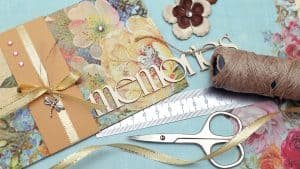
I am sure you recall hearing kids groaning ‘oh, not that story again.’ It might have been in a private setting or embarrassingly public, but the sagging shoulders and bored faces are the same. You might even have been one of those offspring once.
Without a doubt, if you live long enough, you will hear those same kids, now adults, telling the same stories. Quite possibly there is a delightful little child sitting next to them complaining ‘not that story again.’
Essentially we actually need those stories repeated as part of our human journey. And as we age, it is both a joy to hear them and a responsibility to tell them.
In my article, Something YOU call Family, one of the ‘6-steps to Nourishing your Family’ is to expand the family memory bank. The theme of that piece is that no matter whether your family is a circle of friends, co-housing pals, just siblings or one significant other, it is vital for us to keep relationships alive. The process to safeguard the memory bank is one we may think of as being tiresome or self-indulgent, rather than responsible.
Contrary to self-indulgence, however, life stories afford us intimacy with others and actually improve our life span potential. One of the popular online longevity tool predictors suggests that you can add years to your life expectancy baseline if you visit with close friends or family 3 times a week.
Consequently, there are benefits to sharing anecdotes and expanding your personal memory bank. This is true even if you have no children or are not part of a nuclear unit. It is important to connect with distant family members, a long lost friend, or simply to relive special moments.
What Approach Is Right for You?
I may not have a similar amount of time or interest in doing this as someone else may. I tend toward the lazy side, especially for any activity that necessitates consistency. The good thing about a family memory bank is that there are methods that suit us all. I’ll share mine and mention some others.
Scrap Booking
These archives of memorabilia are a terrific accounting of the family, especially when contributions to it are labeled correctly. Most people tend to scrapbook around their children, especially when kids are young. Frankly, it takes some planning, purchasing the right materials and collecting items to maintain.
I adore looking at books others have compiled (well, sometimes – for a little while), but personally I wouldn’t have quite the needed dedication to build them myself. Congrats to you who preserve with such labors of love.
Photo Albums
These albums only count in expanding the memory bank if people and places are categorized or labeled. I have family albums from well over a hundred years ago. I would love to know about these people, but know neither their history nor their names.
I enjoy looking at my own collection of old photos as well. However, unless there is a narrative or documenting description to go along with each pic, they kind of lay flat. [Pun intended.] I think it is a good strategy for us to actually print certain photos among all those we now accumulate on the computer. Few people get to view those hidden gems unless you share them on Facebook or online.
This is a personal concern, but sharing either occurrences or photos on Facebook may not provide the kind of lasting memory or intimacy we are looking for. And remember that I have a blog where I do just that. Nevertheless, I could envision much of our correspondence and heartfelt emails evaporating into the ether. Oral traditions, while seemingly more intangible, may have greater enduring and abiding nature than our fleeting online exchanges. Maybe others have a different approach to this concern.
Oral Traditions
I imagine that many of us have stopped in our tracks to listen to an NPR segment of StoryCorps. I admit to even shedding a tear or two. Maybe you have too. Why is that? I think in part it’s because people are sharing deep-seated feelings with each other (and yes, with us too) that they haven’t previously articulated, or not so openly. It’s special to hear such private accounts and expressions.
Our loved ones may not be on the radio with us to hear our public proclamations, but that doesn’t stop us from preserving our own oral traditions. There is even an ‘app’ StoryCorps.me site that allows you to record yourself with friends or family to recount your personal narratives. Strange family outings, someone’s special touchdown, another’s fart in public, Uncle Jack’s first encounter with the law, grandpa’s immigration journey to the US or Aunt Hatti’s house fire. All qualify for re-telling.
We don’t have to be great raconteurs; all we have to do is open our mouths and share more of our remembrances. If kids, grandkids or nieces and nephews are in the picture and they complain they have ‘heard that before,’ keep going. It indicates you are doing a good job.
Pen Process Path
Whether tiny or expansive, writing may be your preferred method. Locally, I have seen classes for seniors wanting to compose their memoirs. That seems a challenging undertaking. For me, it would be daunting, unless that was my sole concentration for a period of time. Certainly it would be a substantial accomplishment and an enduring gift to your family or friends. Yet, it doesn’t mean that it is the only way to tell your stories via the pen. Two other approaches fit my style more closely – namely the short story or the tiny tale.
Once a month (scheduled or not), you might sit down and write a short true-life adventure of a recollection that recently came to mind. Sometimes the less ‘adventure’ and the more ‘true-life’ they are, the more meaningful and heartwarming these small morsels become to those who love us. Don’t even worry about grammar, spelling or sentence structure; just get it down.
Maybe keep an on-going list during the month of those ideas that come to mind. The tiny tale form can be done almost every day. I have tried to use an engagement calendar that has a couple inches of blank space per each date on the page.
Often I resort to jotting down the day’s events, a recently-seen movie, or something significant in the news. Occasionally I make an entry that is like a tiny life tale outlining a sentence or two about something I may remember.
For me the problem is that I am not always succinct. I often run out of space. If your tendency is the opposite, and your words tend to be few, this may be the perfect approach for you.
Our Payback
While I truly feel that nothing takes the place of story-telling in the oral tradition, anything that we can do to expand the family memory bank and relive our experiences is worth the time. It’s a heart-guarding exploit for us (physically and emotionally) as well as for those whose hearts we guard. Our intention is in the attempt; whether that attempt is glossy or crude doesn’t matter.
Moreover, you may sometimes be surprised that not everyone is bored of your stories. Like a good movie, a re-run can be an occasional treat. Despite whether the accounts sometimes sound like tall-tails or small yarns, they connect us with others. That is why I make the effort, the connections.
You may prefer a different approach than I do, or have other ideas to share which expand the family memory bank. Either way, all deposits bring us a good return-on-investment.
Let’s Have a Conversation:
How do you share your family stories? Do you use scrapbooking or photo albums to preserve memories or prefer to store images digitally? Do you connect with a family member, friend or relive a past moment at least 3 times a week? Please join the conversation below.





